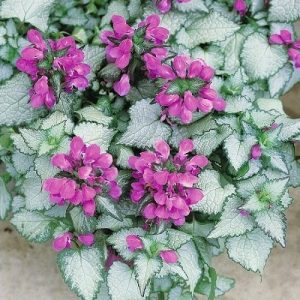This can be an excellent place for your sun-loving houseplants to thrive, provided you take the correct action to protect them the intense direct light.
Although some plants require the high amounts of direct sunlight which a south-facing window can provide, the glass of a window can sometimes intensify the extreme direct light and heat it produces.
In this article, you will learn which plants are the best choice for your south-facing window and how to protect them so they can use this abundant energy source to thrive.
Get to Know Your Space
Before bringing any plants into a space, you should spend a few days observing the sunlight and temperature patterns of the room.
You might think that the conditions around a room would be consistent, but they will actually vary significantly based on specific locations.
These are called micro-climates and they are extremely important in houseplant placement.
It is a good idea to take photos of the way direct sunlight moves around the room throughout the day, as the sun crosses the sky. This way, you can refer back to these photos for making decisions about light later on.
You can also buy an inexpensive little temperature and humidity monitor like this one: to log this information about each micro-climate of the room throughout the day.
Since humidity is another important factor when choosing a houseplant, especially close to a window with extreme exposure to sunlight, humidity may need to be supplemented for some plants.
Monitor the conditions of the room throughout the day, paying extra attention to the area closest to the south-facing window.
Observe how much warmer the space directly in front of the window is then the rest of the room. This will be important for deciding which plants will handle the environment closest to the south-facing window.
Protect Your Houseplants From Extreme Sun Exposure
When plants are busy trying to survive in extreme conditions, they cannot thrive. For example, this why desert cacti grow so slowly.
Energy that could be used for rapid growth, is instead prioritized for survival techniques.
Therefore, if you want your sun-loving houseplants to make the most of the abundant energy available from a south-facing window, you will have to protect them. This is especially true in the summer months.
Here are a few ways you can protect your houseplants who live near a south-facing window:
Selecting The Right Plants For A South-Facing Window
When deciding where to place a plant inside of your home, you should always consider the natural origins of the plant. For this, it is important to understand how plants work in the first place.
The leaves of a plant allow for the process of photosynthesis to occur. During this process, tiny pores of the surface of the leaves open up to draw in carbon dioxide.
Energy some the sun is then harnessed to convert carbon dioxide into sugar which is used in plant growth.
However when those tiny pores open, they allow for some water to escape through evaporation. When too much water escapes, the result is burned leaves and dead pants.
Different types of plants have evolved to survive in unique locations around the world for thousands of years before they became popular houseplants.
In order for them to thrive in a home, the environment must mimic the conditions they would naturally prefer.
Some plants have adapted to live on the forest floor, which would naturally be a low-light environment.
Since water loss isn’t really an issue here, these plants would usually have large, soft leaves which allow them to capture as much sunlight as possible in their shady location.
If one of these plants were placed in a south-facing window, it would inevitably allow too much water to escape, dry out, and die.
This is the reason that cacti and succulents make such a great choice for a south-facing window. They are naturally adapted for surviving in the extremely sunny and hot desert environments.
They do this by prioritizing water retention over rapid growth and keeping those tiny pores closed as much as possible.
10 Best Indoor Plants For Hot, Sunny South-facing Windows
Since it requires a great deal of energy for a plant to produce flowers or fruit, there are many houseplants that can tolerate direct sunlight and happy to call your sunny south facing window home.
So, here is a list of common high-light houseplants who would thrive in your south-facing window:
1: Hibiscus (Hibiscus rosa-sinensis)

For the brightest, boldest, most beautiful flowers you’ll see on any houseplant, you’ll love having a Hibiscus plant.
As a tropical plant who is capable of dramatic floral displays all year round, these plants require as much sunlight as they can get.
For optimal flower production, feed your Hibiscus plant regularly with a potassium-rich fertilizer. Water deeply and often, but avoid soggy soil by allowing it to dry before watering again.
Prune regularly to keep the plant compact and a desired bushy shape with lots of branching. This will create more surface area for flowers to grow.
2. Snake Plant (Sansevieria trifasciata)

Popular on low-light plant lists, the snake plant is very versatile and can thrive in direct sunlight as well.
These plants are often referred to as “impossible to kill” because of their hardy adaptability and tolerance to neglect.
Although more water is often required when growing plants in direct sunlight, Snake plants will not tolerate over-watering.
Be sure to provide good drainage and allow the soil to dry before watering again.
Sometimes with sufficient sunlight, Snake plants can produce some adorable and fragrant little white flowers. This doesn’t happen often, so consider yourself lucky if it does.
3. Aloe Vera (Aloe barbadensis)

Aloe vera plants will do best with direct sunlight, but can survive with filtered light as well. As a succulent, they are highly skilled at water retention and prefer dryer conditions.
One of the main reasons an Aloe plant might die, is over-watering.
Ideally, an Aloe plant should be potted in a terra cotta pot with a cactus or succulent soil mix.
This will ensure that the soil will not retain too much water and allow it to breathe through the porous pot.
If your Aloe vera plant is happy with its environment, it will reward you with baby Aloe “pups”. These pups are easy to propagate by carefully repotting them into their own containers.
4. Croton (Codiaeum variegatum)
The beautiful foliage of Croton plants is every bit as eye-catching as a colorful floral display would be.
These plants require high temperatures and direct sunlight to thrive, making them ideal for a south-facing window.
Crotons will not tolerate over-watering, so only water once the soil has completely dried. However, they do prefer higher humidity environments.
You can easily supplement humidity with a spray bottle, or by placing a glass of water near the plant in a sunny window which will slowly evaporate.
5. Ponytail Palm (Beaucarnea recurvata)

With is disproportionally large truck and wild skinny leaves, the Ponytail palm is a super fun addition to your bright space. This plant is easy to care for, preferring conditions similar to that of a succulent.
Ideally, pot your Ponytail palm in a course soil mix like cactus or succulent soil. Water sparingly, only once the soil has dried.
You can also expect this plant to grow slowly like a succulent, meaning it will only have to be repotted once every few years.
6. Jasmine (Jasminum)

With beautiful and fragrant little white flowers, Jasmine thrives in warm and sunny locations. However, they prefer their sunlight to be filtered, as direct light can be damaging to the dainty flowers.
In order to maintain those adorable blossoms, Jasmine requires lots of water. It prefers to have constantly moist soil, so ensure the soil never dries out. They will also benefit from higher humidity, so misting regularly is ideal.
7. Jade (Crassula ovata)

As a succulent, Jade plants thrive in direct sunlight with minimal watering. Their drought tolerance and sturdy stems with fleshy leaves makes them ideal for a south-facing windowsill.
Water Jade frequently, but only when the soil surface has completely dried. These plants grow slowly, as most succulents do, but can survive for decades with proper care.
Make sure to pot in a sturdy container to prevent it from falling over once it becomes more top-heavy.
8. Money Tree (Pachira Aquatica)

Money trees prefer a mix of direct and filtered sunlight. They also like their environment to be warm, making them an excellent choice for a south-facing window with some sheer curtains.
These plants respond very efficiently to sunlight, meaning you should turn them with every watering or they will quickly become lop-sided.
Money trees do best when watered once every one or two weeks. Water deeply, but allow the soil to dry before watering again.
They do also prefer higher humidity levels, so misting regularly or leaving a cup of water on a radiator near by will be beneficial.
9. Cactus (Cactaceae)

There are roughly 2000 known types of cacti on planet earth and almost all of them originate from desert environments.
No plant is better adapted to surviving in extreme heat and drought than a cactus. This is why they make perfect plants for a south-facing windowsill.
Without any leaves, cacti are extremely successful at storing water inside their bodies.
Living in intensely bright environments with little to no shade or shelter, their spines are actually a cleverly designed shade mechanism.
Some cacti can even produce beautiful and colourful floral displays in the summer, if sunlight needs are met.
10. String of Pearls (Senecio rowleyanus)

This fun and funky plant makes a great conversation piece hanging in your south-facing window.
However, they can burn easily with direct light, so a sheer curtain would be beneficial.
As a succulent, it prefers coarse, sandy soil like a cactus or succulent mix and infrequent watering.
They grow rather quickly and cuttings from this plant are very easy to propagate, so you can grow your collection or share with friends.
Conclusion
Sunlight can be the hardest variable to predict when it comes to houseplants, because some can be very picky about their environments.
Understanding the origins of a plant can significantly help in your decision of where to place it inside your home.
Remember to get to know the conditions of your space. It is tremendously helpful to understand the different micro-climates around a room before choosing a plant for each location.
Also consider the fact that these micro-climates might change throughout the day as the sun crosses the sky.
While cacti and succulents are almost always the best bet for bright south-facing windows, there many other options.
Many other houseplants, often tropical varieties, require bright light to thrive. This is especially true if you’re hoping for a vibrant floral display.
However, protection from the harsh mid-day sun is usually helpful for south-facing windows to avoid leaf burn for most plants.






